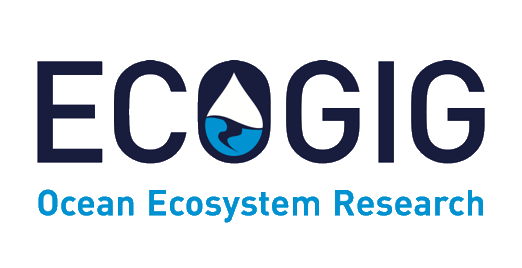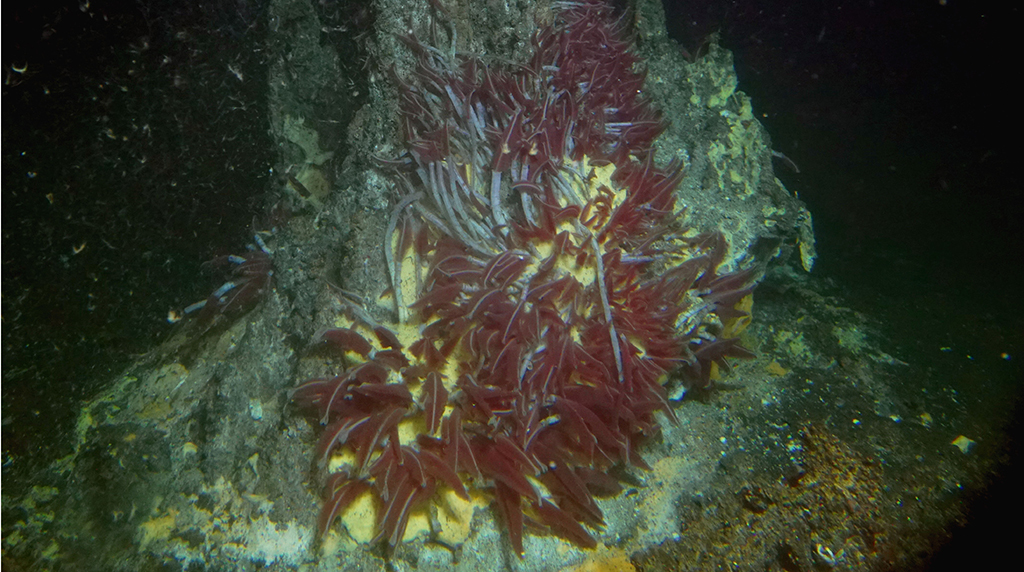About
Our research investigates elemental cycling and hydrocarbon dynamics at deep sea hydrothermal vents and cold seeps. We explore the unique geochemical drivers and biological communities that form in association to the hydrocarbon inputs, and how these communities respond to perturbation.
The Gulf of California is an active young ocean undergoing early phases of rifting, seafloor spreading, and active hydrothermalism, and harbors striking hydrothermal vent and hydrocarbon seeps. Here, unique “amalgams” of geological and biogeochemical features, animal and microbial communities provide natural laboratories to study how seafloor processes shape the evolution, physiology, and activities of microbial and animal communities that mediate key geochemical reactions.
The Gulf of California is UNESCO World Heritage site and an area of global marine conservation significance. It extends from the Colorado River Delta in the north to southeast of the tip of the Baja California Peninsula. The Gulf covers 4,000 km of coastline and reaches depths of more than 3,000 meters. It harbors great marine biodiversity, including hundreds of species of fish, five sea turtles species, nesting and migratory birds, and several marine mammals. The critically endangered Vaquita porpoise only lives in the Gulf of California. Deep ocean trenches and nutrient-rich shallow seabeds support abundant phytoplankton and zooplankton, which provides nurseries for larval fish and the diverse marine food web. The area is challenged by many human activities, including excessive fisheries (artisanal, industrial and sport fishing), unregulated tourism, and coastal development (construction, pollution from agriculture, industry, and sewage.
In November 2018 our research team embarked on an expedition aboard the R/V Atlantis funded by the National Science Foundation to the Guaymas Basin in the Gulf of California. Learn about our discoveries by checking out Dr. Joye's blog posts and photos from the cruise here.
In February 2019 we embarked on an expedition aboard the R/V Falkor operated by the Schmidt Ocean Institute to explore geochemical and microbiological characteristics of hydrothermal plumes and gas plumes and flares across the vent/seep gradient in the Gulf of California. This expedition offered a unique opportunity to bring public attention to the Gulf of California's unique deep-sea ecosystems. Read the press release about the new landscapes and lifeforms that were discovered on this expedition.
Expeditions
December 6-29, 2016 aboard the R/V Atlantis (AT 37-06): This expedition was set to carry out interdisciplinary studies of the Guaymas Basin but was hamstrung due to an issue with customs that resulted in most of the scientific gear being impounded. As a result, researchers had to use ingenuity and grit to carry out a largely exploration based mission to Guaymas Basin. The experimental work was then carried out using samples returned to home laboratories. The researchers were still able to conduct dives with the submarine ALVIN and chase hydrothermal plumes in the water column using the CTD/Niskin rosette.
November 16-28, 2018 aboard the R/V Atlantis: On this expedition, researchers focused on the Guaymas Basin, located in the central area of the Gulf of California. They deployed in situ instrumentation at the seabed, collected bottom water, sediments and rock samples using the submarine ALVIN, and sampled the water column – searching for hydrothermal plumes – using the CTD/Niskin rosette. See more about the research done on this expedition here.
February 11 - March 15, 2019 aboard the R/V Falkor: Dr. Samantha Joye and her multi-national team compared the biology, geology, chemistry, and microbiology of sites along the southern to the northern Gulf. The northern area is largely unexplored and the geological characteristics, microbiology, and seafloor fauna are unknown, which made the expedition exploratory in nature. They explored known and new sites, building on previous work and diving on new sites. The goals were to identify and quantify habitat-specific microbial populations and assess how those microorganisms interact with the geologic structures and megafauna of vents, seeps, and hydrates. The scientists sought to reveal previously unknown areas with shipboard mapping, followed by collection of sediment, fluid, and microbiology samples collected with ROV SuBastian. In-situ tools including the ABISS autonomous lander and jumbo osmotic fluid samplers will be used to obtain geochemical data under in situ conditions. Together, these data will help them unravel the microbial mysteries of the Gulf of California. See more about this expedition here! Read the press release about the new landscapes and lifeforms that were discovered on this expedition.
Publications
Generation and untilization of volatile fatty acids and alchohols in hydrothermally altered sediments in the Guaymas Basin, Gulf of California. G-C Zhuang, A Montgomery, VA Samarkin, M Song, J Liu, F Schubotz, AP Teske, K-U Hinrichs, and SB Joye. Geophysical Research Letters, in press.
Social Media
The best way to keep track of our activities is by following us on Twitter, Facebook, and Instagram. We will be primarily using the ECOGIG social media channels and the #microbialmysteries hashtag.
Facebook: @ecogig.outreach
Twitter: @DeepseaECOGIG
Instagram: @ecogig
Scientists' Twitter Accounts:
Samantha (Mandy) Joye @seepexplorer


















 back to top
back to top